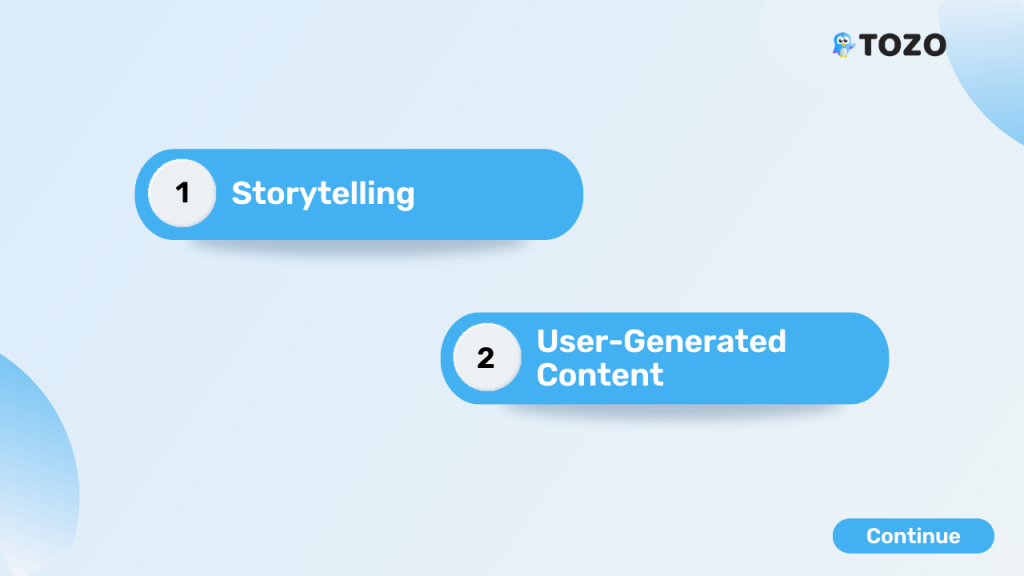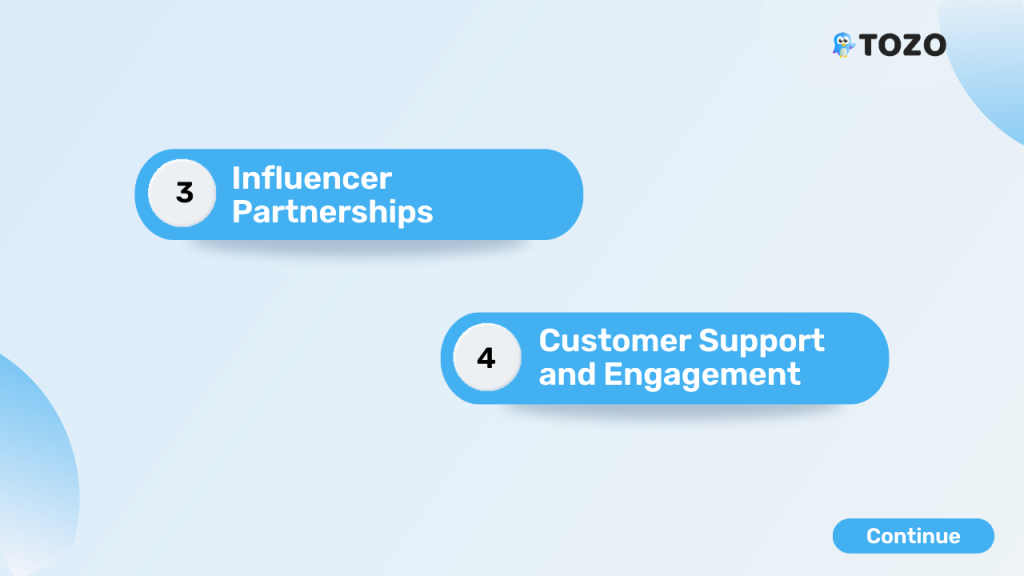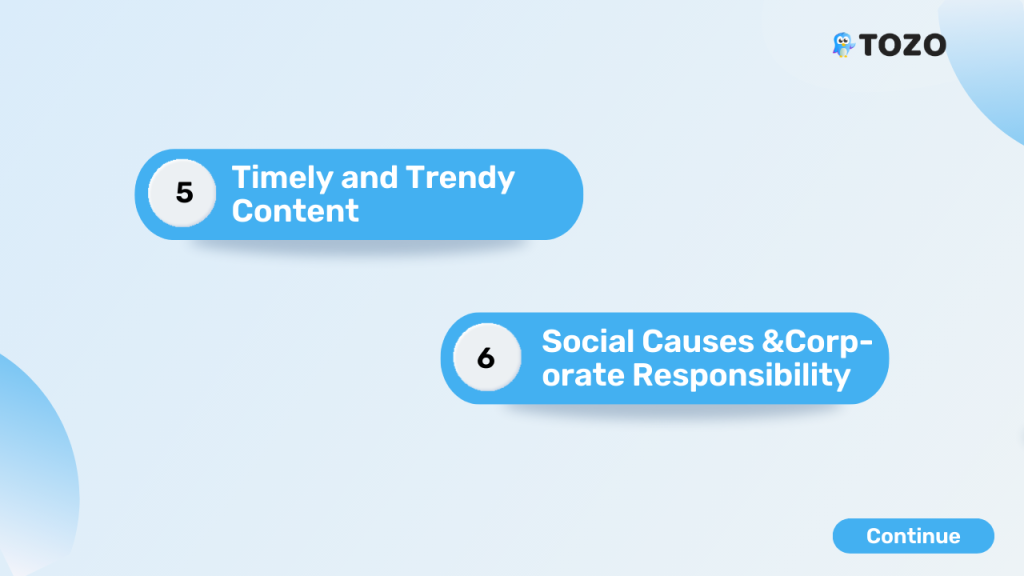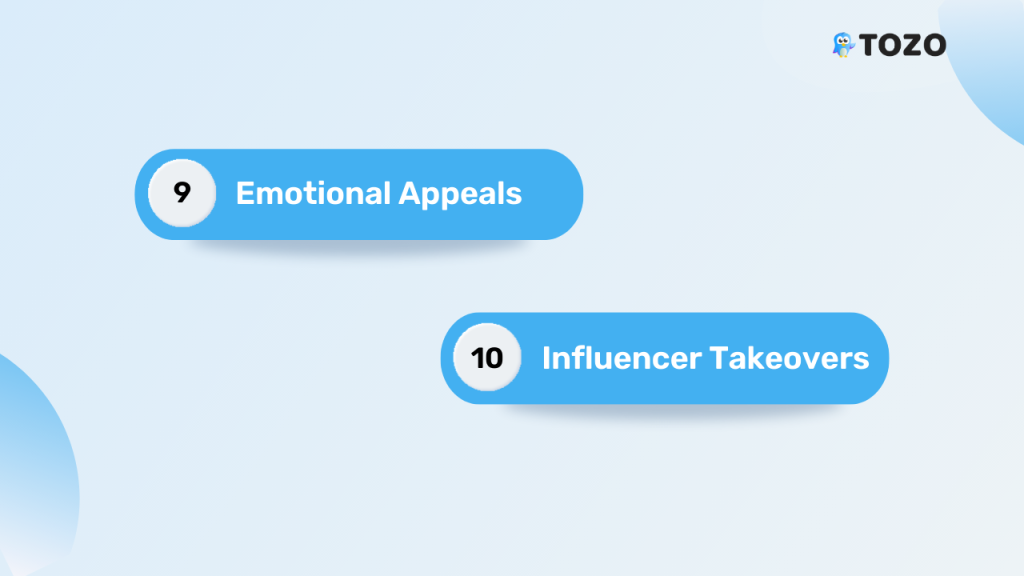Introduction
Social media has firmly established itself in both our personal and professional life.
It offers tremendous opportunities for businesses to connect with their target audience, build brand awareness, and drive engagement.
However, not all social media strategies are equally effective.
In this blog, we will explore eight excellent examples of social media working strategies that have proven successful for various brands.
These strategies demonstrate the power of social media in achieving business goals and engaging with audiences authentically.
10 Examples of social media working strategies

1. Storytelling:
Storytelling is a powerful strategy that allows brands to connect with their audience on an emotional level.
Nike, for example, uses storytelling to inspire and empower athletes.
Their “Just Do It” campaign is a perfect example of how they create compelling narratives around athletes’ journeys, challenges, and triumphs.
By showcasing real stories, Nike resonates with their audience, creating a sense of authenticity and loyalty.
2. User-Generated Content:
User-generated content (UGC) is a valuable asset for brands as it promotes authenticity and builds a sense of community.
GoPro excels in this strategy by encouraging customers to share their adventures captured with their cameras.
They showcase the best user-submitted content on their social media channels, allowing followers to witness the incredible moments and experiences that GoPro enables.
This strategy not only amplifies brand exposure but also fosters a strong bond between the brand and its users.

3. Influencer Partnerships:
Influencer partnerships are a popular strategy to leverage the reach and influence of prominent individuals in specific niches.
Glossier, a beauty brand, collaborates with beauty influencers to create honest product reviews, tutorials, and endorsements.
By tapping into the influencers’ dedicated fan base, Glossier reaches new audiences and builds trust through authentic recommendations.
These partnerships help increase brand visibility and credibility among their target market.
4. Customer Support and Engagement:
Social media provides an opportunity for brands to deliver exceptional customer support and engage directly with their audience.
Wendy’s has gained attention for its witty and humorous responses to customer inquiries or comments on social media platforms.
By infusing their brand personality into customer interactions, Wendy’s not only resolves issues promptly but also creates a memorable and shareable experience.
This approach strengthens customer relationships and generates positive brand sentiment.

5. Timely and Trendy Content:
Creating content that aligns with current trends and events can help brands stay relevant and capture the attention of their audience.
Oreo excels in this strategy by regularly releasing limited-edition flavors and designs tied to holidays, sporting events, and pop culture moments.
By tapping into the buzz around these events, Oreo sparks conversations and encourages engagement, resulting in increased brand visibility and product sales.
6. Social Causes and Corporate Responsibility:
Brands that demonstrate a commitment to social causes and corporate responsibility resonate with socially conscious consumers.
Patagonia, known for its sustainable outdoor apparel, utilizes social media to raise awareness about environmental issues and share their own initiatives.
By aligning their brand with a larger purpose, Patagonia attracts a dedicated following of environmentally conscious individuals who support their mission.
This strategy not only strengthens brand loyalty but also attracts new customers who value sustainable practices.

7. Interactive Contests and Giveaways:
Interactive contests and giveaways are effective in boosting engagement, increasing brand visibility, and attracting new followers.
Taco Bell, for instance, runs creative contests that encourage followers to participate and share their entries.
From design competitions to user-generated content challenges, Taco Bell incentivizes engagement and rewards participants with prizes.
This generates buzz, user-generated content, and increased brand exposure as participants share their entries with their networks.
8. Cross-Platform Promotion:
To maximize the impact of social media efforts, brands should leverage cross-platform promotion.
Coca-Cola is a prime example of effectively synchronizing their campaigns and content across multiple social media platforms.
They maintain consistent branding and messaging while adapting content to suit each platform’s unique characteristics.
By employing this strategy, Coca-Cola ensures a cohesive brand experience and effectively reaches diverse audiences who are active on different platforms.

9. Emotional Appeals:
Brands that tap into the emotions of their audience can create powerful connections.
Dove, for instance, promotes body positivity and self-acceptance through their campaigns.
By sharing relatable stories and encouraging self-love, Dove resonates with their audience, building trust and loyalty.
Emotional appeals create a deeper bond with the audience and can result in increased engagement and brand advocacy.
10. Influencer Takeovers:
Going beyond simple collaborations, brands can allow influencers to take over their social media accounts for a limited time.
This strategy provides a fresh perspective and introduces the influencer’s audience to the brand.
Benefit Cosmetics, for example, partners with beauty influencers to host Instagram story takeovers, where they share makeup tips, tutorials, and exclusive content.
This approach not only expands reach but also generates excitement and increases engagement.
Conclusion
These 8 excellent examples of social media working strategies showcase the diverse possibilities and effectiveness of social media in achieving business objectives.
From the power of storytelling to the authenticity of user-generated content, the influence of influencers, and the engagement through customer support, each strategy highlights the importance of building meaningful connections with the audience.
By leveraging timely and trendy content, supporting social causes, running interactive contests, and implementing cross-platform promotion, brands can maximize their reach, visibility, and engagement.
By studying and adapting these successful strategies to suit their unique brand identity and target audience, businesses can harness the full potential of social media to drive growth and achieve their marketing goals.



